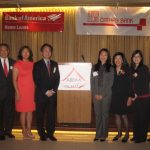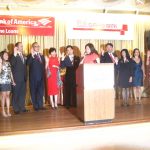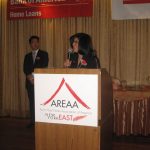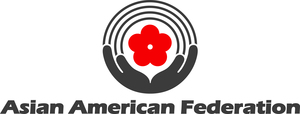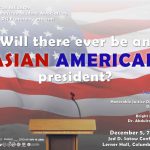New Council Districts Highlight the Growth and Diversity of Asian New Yorkers
July 23, 2013
“As discussed in our demographics report in April 2012, the Asian population remains the fastest growing in the City,” said Howard Shih, Census Programs Director at the Federation. “But to see the Asian American community as monolithic would be erroneous. The population numbers disguise the diversity of our population. With the upcoming City elections, term limits, and with many of the Council Districts slated for new representatives, we hope this will be a useful tool for the incoming City Council to better serve our Asian community,” added Shih.
Some of the key highlights from the briefing paper are:
- In addition to one majority Asian district, eleven other districts had more than one in five residents who were Asian.
- Four City Council Districts were home to a very diverse mix of Asian ethnic groups. Each of these districts had seven or more different Asian groups who each had populations of more than 1,000 people.
- The diversity of Asian languages spoken in the city is a particular challenge when reaching out to the community.
“This report is an invaluable tool that will serve to help elected officials better understand the growing Asian population in New York City,” said Council Member Daniel Dromm, who represents Jackson Heights, Elmhurst, and East Elmhurst. Dromm’s district, one of the most ethnically diverse areas in the City, saw an increase of over 8,000 Asians in the total district population. “The data in this document provides key insight into my district that will enable me to better communicate and understand a vital part of my constituency”.
As the briefing paper points out, Council District 20, centered in Flushing, remains the district with the largest Asian population at 66% of the population. “While I represent the largest Asian population, it is important to note that Asians are living throughout the City. The myth that Asians live in identifiable enclaves [has] long been dispelled. Our city leaders have to be mindful of the diversity of the Asian community, from languages spoken to the cultural practices,” said Council Member Peter Koo. “The onus is on us – the elected leaders – to hear their issues, address their concerns, and make room for them to contribute to their neighborhoods,” added Koo.
Manhattan’s Chinatown still remains as a district with one of the largest Asian populations. “My constituency represents one of the largest populations of Asians and Asian Americans in New York City, and this report highlights what we already know: we must have greater service and resources in these growing communities,” said Council Member Margaret S. Chin, who represents the area. “Cultural understanding, linguistic access, and civic participation are essential keys to ensuring that these voices are heard.”
“The briefing paper shows our growing electoral strength. Asian New Yorkers can play a significant role in determining the next leaders of our city in the upcoming elections,” said Cao K. O, executive director of the Federation. “And our community must re-cast our importance in the city’s civic matters. We have to be willing to embrace this opportunity by going to the polls.”
To access the report, please visit: http://aafederation.org/headlines.asp?hid=141
From APIAVote: Census Analysis of Asian American Electorate

June 7, 2013
Add 500,000 New Voters
- The growth of the Asian American electorate was relatively steady between 2004-8 and 2008-12 (an increase of about 589,000 and 547,000 in each period). By contrast, the number of white voters rose by about 475,000 between 2004-8, and declined by about 2 million between 2008-12.
- The biggest growth in the Asian American electorate was between 2000 and 2004, with 723,000 new voters. However, 2004 was also a year that saw an increase of 10 million white voters, thereby muting the electoral affect of Asian American’s growth.
- The Asian American share of the voting population has been steadily increasing, from 1.8 percent of all voters in 2000 and 2.2 percent in 2004, to 2.6 percent in 2008, and 2.9 percent in 2012.
- Voter registration remains a significant hurdle for Asian Americans, with only 56 percent of adult citizens registered to vote in 2012. This compares to registration rates of 72 percent and 73 percent among whites and blacks, respectively, and 59 percent among Latinos.
- Once registered, however, Asian Americans turn out in rates comparable to other groups: 84 percent for Asian Americans, 82 percent for Latinos, 87 percent for whites, and 91 percent for blacks.
For more information on this growing electorate, “Behind the Numbers” is available at: http://www.apiavote.org/sites/default/files/btn_final_singles_FINAL_0.pdf.
Further details from the census report can be found at
http://www.apiavote.org/sites/default/files/Census%202012%20Voting%20Rates.pdfNY City Bar: 2011 Law Firm Diversity Benchmarking Report Released
NY City Bar: 2011 Law Firm Diversity Benchmarking Report Released
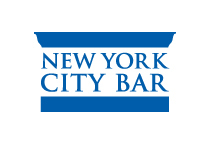
The New York City Bar has released its 2011 Diversity Benchmarking Study. Click on the title of this entry to read the post from the City Bar’s blog. Here’s an excerpt from the report about Asian attorneys:
Asian attorneys represent the majority of minority attorneys accounting for 53.1% of minority attorneys and 54.2% of minority associates. A curious ongoing trend is the decline for Asian attorneys – vis-à-vis Black and Hispanic attorneys – as they rise to leadership positions at signatory firms declining from over half of minority associates to 45.4% of partners and 34.8% of practice group heads.
To read the report, go to http://www.nycbar.org/images/stories/pdfs/diversity/2011_law_firm_diversity_benchmarking_report.pdf
LA Times: Asian Americans overwhelmingly backed Obama, Democrats
LA Times: Asian Americans overwhelmingly backed Obama, Democrats
Back in April, I was quoted in the Wall Street Journal as stating, “It would be a shame if we weren’t able to mobilize because it is an election year and it is a chance for the Asian community to have their voice heard.” Now that the 2012 national election has come and gone, it seems that some positive gains have been made by APAs, both at the polls and in the halls of Congress. Congrats to Grace Meng and the other APAs who were voted into office on Election Day. More work needs to be done, though:
But the poll of Asian Americans suggests that there is more work to be done. More than half – 51% – said that they were never contacted by a campaign, political party or community group to register to vote. Of those who were contacted, 55% said they were approached by Democrats and 38% by Republicans.
RMHC/Asia Scholarship Program

The 2013 RMHC/ASIA Scholarship Program, the largest Asian American student scholarship offered in the New York Tri-State area, is now accepting entries at http://www.rmhcnytristate.org/. The scholarship offers six $17,000 scholarships to high school seniors of Asian descent. Attached is a flyer containing additional information about the scholarship including eligibility guidelines and requirements. The deadline for entries is December 20, 2012.
AALDEF Asian American Poll Monitoring Project
VOLUNTEERS NEEDED to defend Asian American Voting Rights
Tuesday, November 6, 2012 
In past elections, Asian Americans have faced a series of barriers in exercising their right to vote. In response, the Asian American Legal Defense and Education Fund will monitor the elections for compliance with the federal Voting Rights Act, which mandates bilingual ballots and forbids anti-Asian voter discrimination.
Volunteers are needed to monitor poll sites in Asian American neighborhoods in 14 states. Volunteers will administer a multilingual voter survey in 3-hour shifts to document voting problems on Election Day. Polls are generally open from 7:00 AM to 8:00 PM.
There will be a one hour training for all volunteers, or 90 minutes for attorneys seeking CLE credits. All volunteers must be non-partisan. To sign up, go to http://www.aaldef.net/volunteer_monitor_form.aspx. Thank you!
For more information, contact AALDEF at 800-966-5946 or [email protected].



